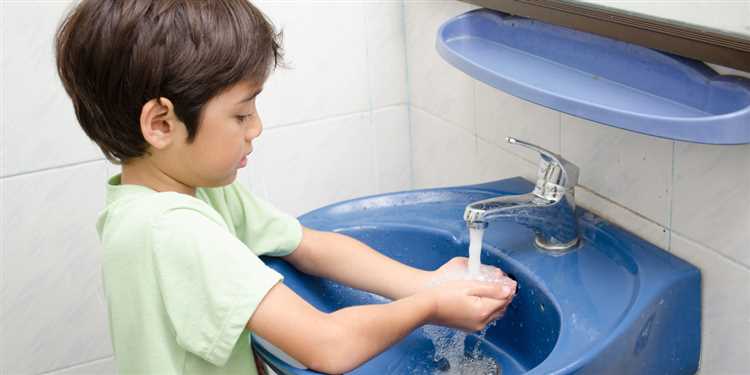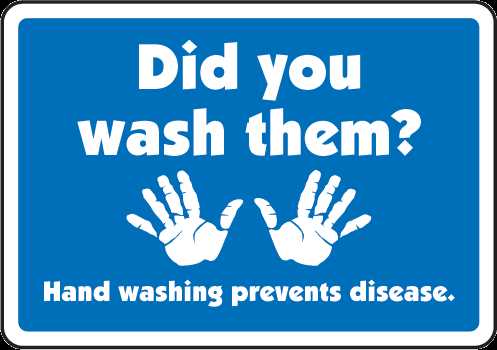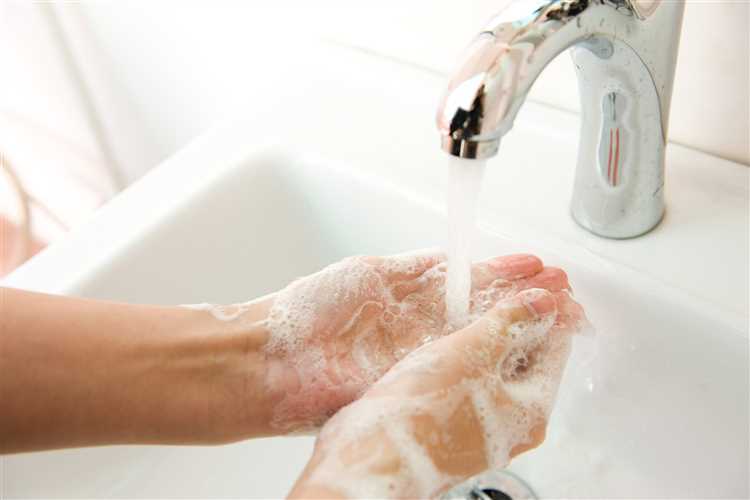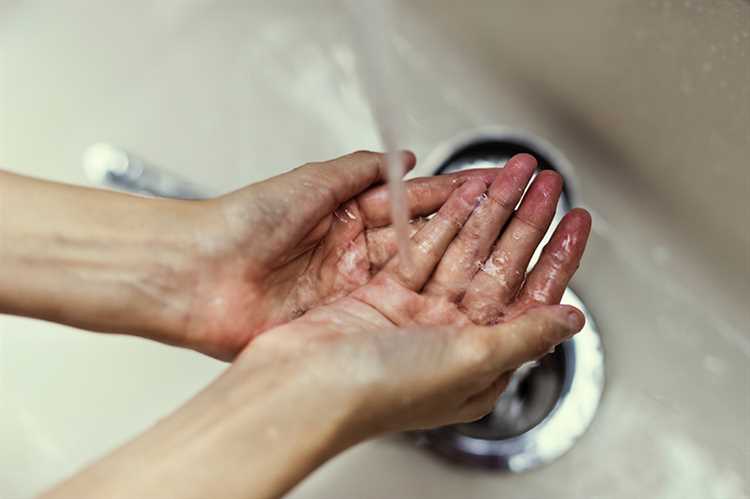
Hand hygiene is a crucial aspect of preventing the spread of diseases and maintaining personal health. One of the most critical times to wash your hands is after using the toilet. When you use the restroom, you come into contact with various bacteria, viruses, and other harmful microorganisms that can cause illness. Washing your hands thoroughly after using the toilet helps to eliminate these harmful pathogens and protects yourself and others from potential infections.
When we flush the toilet, microscopic particles and droplets containing bacteria and viruses can spread into the air and land on various surfaces, including our hands. These pathogens are easily transferred to commonly touched objects like doorknobs, light switches, and faucets. If you don’t wash your hands after using the toilet, you risk transferring these pathogens to your mouth, nose, or eyes, potentially leading to infections, such as the common cold, flu, or gastrointestinal illnesses.
Proper handwashing is a simple yet powerful way to prevent the transmission of infectious diseases. It involves using soap and water to create a lather and cleaning all surfaces of your hands, including the backs, between the fingers, and under the nails. The act of rubbing your hands together for at least 20 seconds helps to dislodge and remove pathogens effectively. By taking the time to wash your hands after using the toilet, you contribute to the well-being of not only yourself but also your family, friends, and the community at large.
- The Importance of Hand Hygiene
- When Should You Practice Hand Hygiene?
- The Proper Technique for Handwashing
- Preventing the Spread of Germs
- 1. Wash your hands regularly
- 2. Use soap and water
- Reducing the Risk of Infection
- Maintaining Personal Hygiene
- Protecting the Health of Others
- Promoting Overall Well-being
- The Benefits of Proper Hand Hygiene
- Incorporating Handwashing into Your Daily Routine
- Simple Steps for Effective Handwashing
- Q&A
- Why is it important to wash your hands after using the toilet?
- What happens if you don’t wash your hands after using the toilet?
- How long should you wash your hands after using the toilet?
- What is the proper technique for washing hands after using the toilet?
- Can hand sanitizer be used as a substitute for washing hands after using the toilet?
- Why is it important to wash your hands after using the toilet?
The Importance of Hand Hygiene
Hand hygiene is a critical aspect of maintaining good health and preventing the spread of infections. Proper hand hygiene involves washing your hands regularly with soap and water or using an alcohol-based hand sanitizer.
By practicing good hand hygiene, you can reduce the transmission of harmful bacteria and viruses. Many infectious diseases, such as the common cold, flu, and gastrointestinal infections, can be easily spread through contaminated hands.
When Should You Practice Hand Hygiene?
It is important to practice hand hygiene at key times throughout the day to minimize the risk of infection. These key times include:
- Before preparing or eating food
- Before and after caring for someone who is sick
- After using the toilet
- After sneezing, coughing, or blowing your nose
- After touching surfaces in public areas
The Proper Technique for Handwashing
Proper handwashing technique is essential to effectively remove dirt, bacteria, and viruses from your hands. Follow these steps to ensure thorough hand hygiene:
- Wet your hands with clean, running water.
- Apply soap and create a lather by rubbing your hands together.
- Scrub your hands for at least 20 seconds, making sure to clean all surfaces, including the backs of your hands, between your fingers, and under your nails.
- Rinse your hands well under running water.
- Dry your hands using a clean towel or air dry them.
| Benefits of Hand Hygiene |
|---|
| 1. Reduces the risk of infections |
| 2. Prevents the spread of diseases |
| 3. Protects yourself and others |
| 4. Promotes overall health and well-being |
Remember, good hand hygiene is a simple yet powerful practice that can make a significant difference in preventing the spread of illnesses. By making handwashing a habit, you can protect yourself, your loved ones, and your community from infectious diseases.
Preventing the Spread of Germs
Proper hand washing is essential in preventing the spread of germs. When we use the toilet, we come into contact with various bacteria and viruses that can cause illnesses. Washing our hands thoroughly with soap and water removes these harmful microorganisms and prevents them from spreading to others.
Here are some key steps to follow to prevent the spread of germs:
1. Wash your hands regularly
It is important to wash your hands before and after using the toilet. Additionally, you should wash your hands before preparing or consuming food, after handling garbage, and after being in public places where germs may be present. Washing your hands should be a routine part of your daily hygiene practices.
2. Use soap and water
Using soap and water is the most effective way to remove germs from your hands. The friction created by rubbing your hands together while washing helps to loosen and wash away the pathogens. Be sure to use enough soap to create a good lather and wash all surfaces of your hands, including between your fingers and under your nails.
3. Wash for at least 20 seconds
Proper hand washing requires sufficient time to effectively remove germs. The Centers for Disease Control and Prevention (CDC) recommends washing your hands for at least 20 seconds, which is about the time it takes to sing the “Happy Birthday” song twice.
By following these simple steps, you can help prevent the spread of germs and keep yourself and others healthy.
Reducing the Risk of Infection

To minimize the risk of infection and prevent the spread of harmful bacteria and viruses, it is crucial to wash your hands thoroughly after using the toilet. By following proper handwashing techniques, you can significantly reduce the chances of contracting and transmitting illnesses.
1. Use soap and running water: Washing your hands with soap and running water is the most effective way to remove germs from your hands. Make sure to wet your hands, apply soap, lather well, and rub your hands for at least 20 seconds, paying attention to all areas, including between your fingers and under your nails.
2. Proper handwashing technique: Proper technique includes rubbing your hands together vigorously and creating friction to dislodge any bacteria or viruses on your skin. Don’t forget to wash your wrists and forearms as well.
3. Pay attention to high-risk areas: Certain areas are more prone to harbor harmful pathogens, such as doorknobs, faucets, and toilet flush handles. It is crucial to wash your hands thoroughly after touching these surfaces to avoid spreading germs.
4. Dry your hands properly: After washing your hands, use a clean towel or air dryer to dry them thoroughly. Moisture on your hands can foster the growth and transmission of bacteria, so ensuring your hands are completely dry is essential.
5. Hand sanitizers as an alternative: If soap and water are not readily available, using an alcohol-based hand sanitizer with at least 60% alcohol content can be an effective alternative. However, hand sanitizers should not replace regular handwashing, as they do not eliminate all types of germs and may not be as effective against certain viruses.
6. Encourage good hygiene practices: Apart from practicing good hand hygiene yourself, it is essential to promote and encourage others to do the same. By setting an example and raising awareness about the importance of handwashing, you can contribute to reducing the overall risk of infection within your community.
In conclusion, washing your hands after using the toilet is a simple yet powerful way to reduce the risk of infection. By making proper handwashing a habit, you can protect yourself and others from harmful bacteria and viruses, ultimately promoting better health and well-being.
Maintaining Personal Hygiene
Personal hygiene is essential for keeping ourselves and those around us healthy. It involves practicing good habits to ensure cleanliness and prevent the spread of germs and diseases. One crucial aspect of personal hygiene is washing our hands, especially after using the toilet. However, there are other hygiene practices that we should keep in mind to maintain good health.
| Showering regularly | Regular showering helps remove dirt, sweat, and dead skin cells from our bodies. It also helps prevent body odour and keeps our skin clean and healthy. |
| Brushing teeth | Brushing our teeth twice a day helps remove food particles, plaque, and bacteria that can cause tooth decay and gum diseases. It also gives us fresh breath and a confident smile. |
| Trimming nails | Trimming nails regularly prevents the buildup of dirt and bacteria. It also reduces the risk of scratching ourselves or others and helps maintain proper hand hygiene. |
| Washing hair | Regularly washing our hair helps remove dirt, oil, and dandruff, promoting scalp health and preventing hair problems such as itchiness and hair loss. |
| Changing clothes frequently | Wearing clean clothes and changing them regularly helps prevent the accumulation of sweat, dirt, and bacteria. It also promotes good body hygiene and prevents body odour. |
| Using clean towels and bedding | Regularly washing and changing towels and bedding helps prevent the spread of germs, bacteria, and allergens. It also ensures comfort and a healthy sleeping environment. |
By maintaining good personal hygiene practices, we can protect ourselves and others from illnesses and promote overall well-being. It is important to make these habits a part of our daily routine and educate others about their significance.
Protecting the Health of Others
Washing your hands after using the toilet is not only important for your own health, but also for the health of others. By practicing proper hand hygiene, you can help prevent the spread of harmful bacteria and viruses to those around you.
When you don’t wash your hands after using the toilet, you risk spreading germs to objects and surfaces that you come into contact with. This includes door handles, faucets, and other commonly touched surfaces. When others touch these contaminated surfaces, they can unknowingly pick up germs and potentially become ill.
By washing your hands with soap and water, you can effectively remove bacteria and viruses that may be present on your hands. This helps to break the chain of infection and reduces the risk of spreading harmful pathogens to others.
In addition to preventing the spread of illness, proper hand hygiene after using the toilet also promotes good hygiene practices in general. By making handwashing a regular habit, you are setting a positive example for those around you, especially children. Regular handwashing can help instill good hygiene practices that can last a lifetime.
So, remember to wash your hands thoroughly with soap and water after using the toilet. By doing so, you are not only protecting your own health but also the health of those around you.
Promoting Overall Well-being

Washing your hands after using the toilet is not only important for personal hygiene, but it also plays a significant role in promoting overall well-being. Proper hand hygiene is one of the most effective ways to prevent the spread of infectious diseases and maintain good health.
By washing your hands with soap and water, you can effectively remove germs, bacteria, and viruses that you may have picked up from the toilet seat or from touching other contaminated surfaces. This simple act can prevent the transmission of harmful pathogens that can cause illnesses such as diarrhea, respiratory infections, and even more serious conditions.
In addition to preventing the spread of diseases, washing your hands after using the toilet can also help you maintain a clean and healthy living environment. Imagine if everyone neglected this simple yet vital practice – the risk of contamination would be much higher, affecting not only individuals but entire communities.
The Benefits of Proper Hand Hygiene

Regular handwashing can significantly reduce the risk of contracting and spreading infectious diseases such as colds, flu, and stomach bugs. It is especially important to wash your hands after using the toilet, as this is where a high concentration of germs and bacteria can be found.
By practicing proper hand hygiene, you are not only protecting yourself but also those around you. This is particularly important in settings where people are in close proximity, such as schools, workplaces, and healthcare facilities. By making handwashing a priority, you are contributing to a healthier and safer environment for all.
Incorporating Handwashing into Your Daily Routine
To make handwashing a habit, it is important to incorporate it into your daily routine. You can start by setting reminders, such as washing your hands before and after each meal, after using the toilet, and after coughing or sneezing. Encourage your family, friends, and colleagues to do the same.
Remember to use soap and water and wash your hands thoroughly for at least 20 seconds. Pay attention to all areas of your hands, including the palms, backs, fingers, and under the nails. If soap and water are not available, you can use alcohol-based hand sanitizers that contain at least 60% alcohol.
Simple Steps for Effective Handwashing
Proper handwashing technique is essential in preventing the spread of harmful bacteria and viruses. Follow these simple steps to ensure your hands are thoroughly cleaned:
| Step 1: | Wet your hands with clean, running water. The temperature of the water does not matter. |
| Step 2: | Apply enough soap to cover all surfaces of your hands. |
| Step 3: | Rub your hands together, palm to palm, creating a lather. Make sure to scrub all areas, including the back of your hands, between your fingers, and under your nails. |
| Step 4: | Continue rubbing your hands for at least 20 seconds. You can sing the “Happy Birthday” song twice to ensure you are washing for the recommended amount of time. |
| Step 5: | Rinse your hands thoroughly under clean, running water. |
| Step 6: | Dry your hands using a clean towel or air dry them. If using a towel, make sure it is not shared with others. |
| Step 7: | If possible, use a paper towel to turn off the faucet and open the door to avoid recontamination. |
By following these simple and effective steps, you can ensure that your hands are properly washed and reduce the risk of spreading germs. Remember, handwashing is one of the most important actions you can take to protect yourself and others from getting sick.
Q&A
Why is it important to wash your hands after using the toilet?
It is essential to wash your hands after using the toilet because it helps eliminate harmful bacteria and viruses that can cause illnesses. By washing your hands, you can prevent the spread of germs to yourself and others.
What happens if you don’t wash your hands after using the toilet?
If you don’t wash your hands after using the toilet, you can come into contact with fecal matter containing bacteria and viruses. This can lead to the spread of infections and diseases, such as gastroenteritis, urinary tract infections, and respiratory infections.
How long should you wash your hands after using the toilet?
You should wash your hands for at least 20 seconds after using the toilet. This ensures that you properly clean your hands and remove any bacteria or viruses that may be present.
What is the proper technique for washing hands after using the toilet?
The proper technique for washing hands after using the toilet includes wetting your hands with clean water, applying soap, rubbing your hands together to create a lather, scrubbing all surfaces of your hands, including between your fingers and under your nails, rinsing off the soap thoroughly, and drying your hands with a clean towel or air dryer.
Can hand sanitizer be used as a substitute for washing hands after using the toilet?
Hand sanitizer can be used as a temporary substitute for washing hands after using the toilet, especially when soap and water are not available. However, washing hands with soap and water is always the preferred method as it is more effective in removing dirt, bacteria, and viruses from your hands.
Why is it important to wash your hands after using the toilet?
It is important to wash your hands after using the toilet because it helps to prevent the spread of germs and bacteria. When you use the toilet, you come into contact with various types of bacteria, such as E. coli, which can cause serious illnesses. Washing your hands with soap and water removes these bacteria and helps to keep you and others healthy.